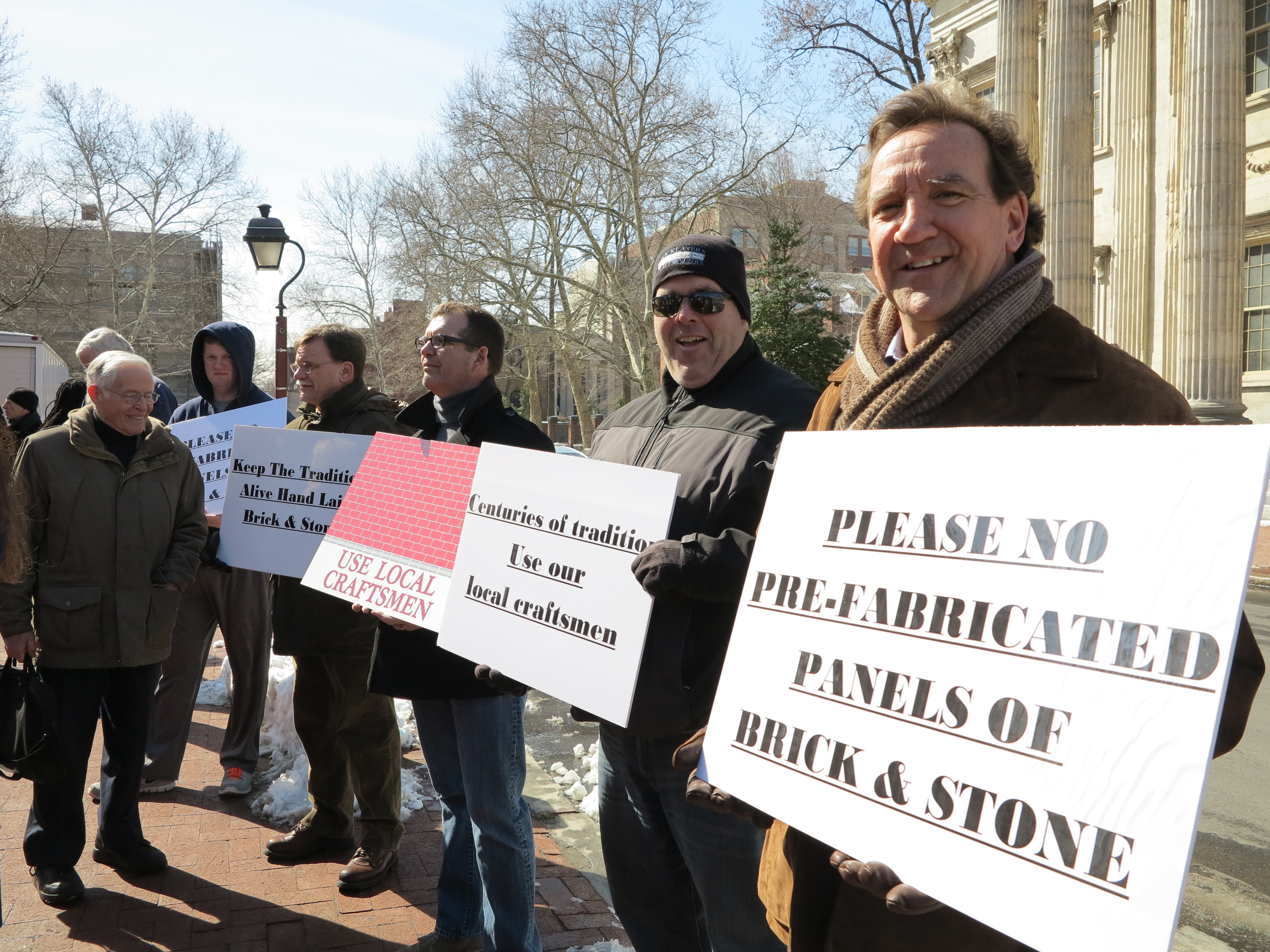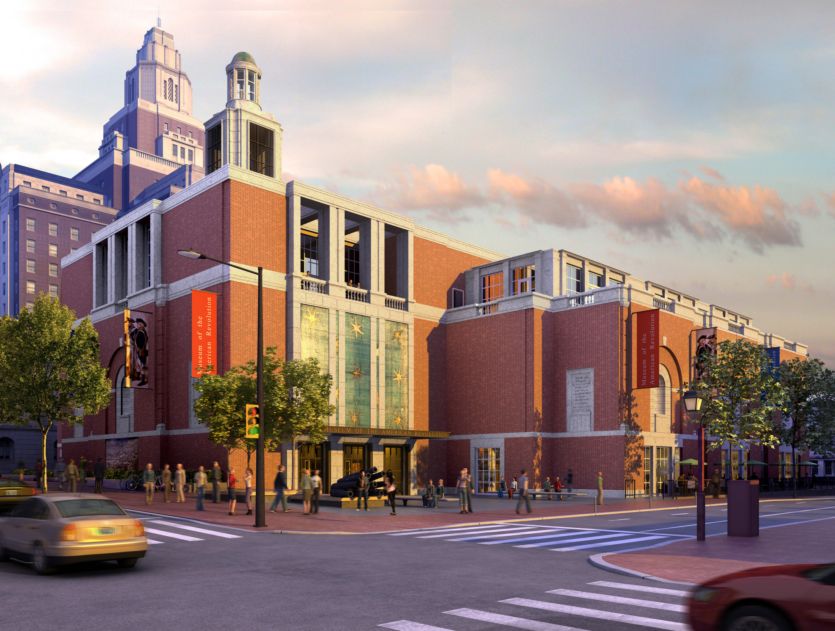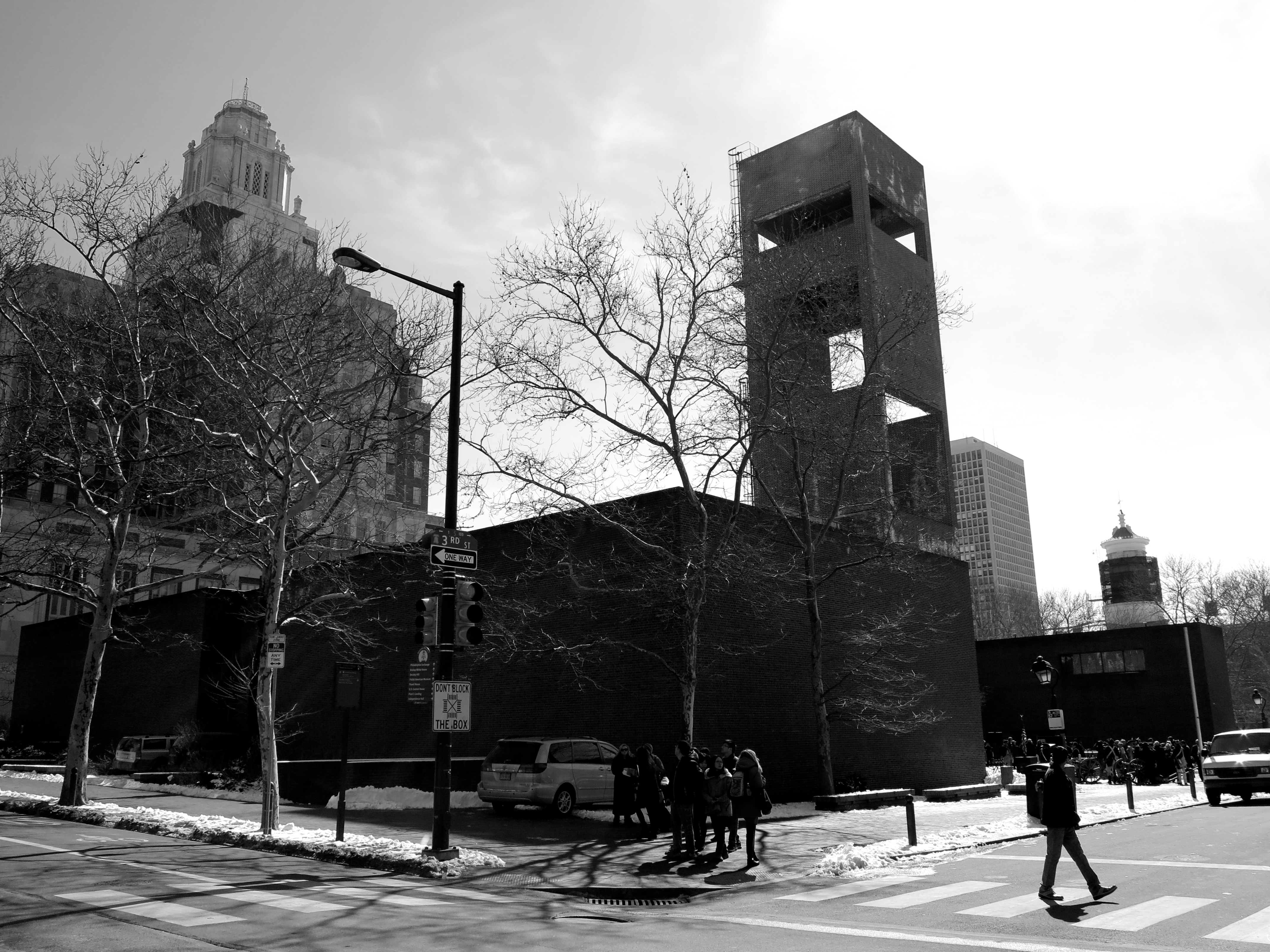Where a brick is more than a brick

The old Independence Visitor Center will soon be demolished to clear the southeast corner of 3rd and Chestnut to make way for the new Museum of the American Revolution.
The prospect of a new museum at the edge of Independence National Historical Park is exciting, helping to tell the story of America’s struggle for independence, creating a rich visitor experience, and giving this quiet corner a more active use.
At a ceremonial kickoff Wednesday Museum President and CEO Michael Quinn, former Governor Ed Rendell, and philanthropist H.F. “Gerry” Lenfest enthusiastically trumpeted the possibilities of the new museum to tell the story of America’s founding. Where better than in the heart of Philadelphia, amid the resources of Independence NHP?
There is good reason to be excited about the museum project, but the design still leaves much to be desired. Last month the Art Commission pushed back against Robert A.M. Stern Architects phony-coloni design, a knockoff version of the real historic architecture that’s within sight of this spot, and aspects that create a poor street presence. Conversations between the project team and the Art Commission are ongoing.
The Art Commission asked the architects to rethink the cupola, which apes Independence Hall, and the lack of windows on the ground floor along Chestnut. (For more on the Art Commission’s responses see Inquirer architecture critic Inga Saffron’s recent column.)
Perhaps worse than the deadening expanses of brick is the reality that it’s not even real brick. So it’s faux Georgian with artificial masonry panels.
During his remarks Monday Ed Rendell noted that this museum will help visitors foster a greater appreciation for the founding, “what we have, what we built … because of the ideals we stand for as the greatest nation in the world.”
This is going to be a museum dedicated to the founding struggle for American independence and the loftiest ideals of our democracy. So why’s the architecture so thin?
Should we be demonstrating those ideals through imitation architecture and phony brick walls? Is the message prefab Americana? This should be a museum built for the ages.
The founding generation of American architects also struggled with how to express our democracy in architectural form, and several important results surround the site of the future museum: William Strickland’s stunning Second Bank, a Greek Revival temple on Chestnut Street, and First Bank just across Third Street, Samuel Blodgett’s fussier take on Classical Revival.
At Wednesday’s event about a dozen members of the Bricklayers and Allied Craftworkers Local 1 PA/DE stood in respectful protest in defense of real masonry. They were there with a simple message: Brick on brick, not lick and stick. They held signs reading “Keep the tradition alive” and “Please no pre-fabricated panels of brick & stone.”
George Posner has been a bricklayer for 45 years and he worked early in his career on the old Visitor Center that will be razed to make way for the new museum. His only objection to the project is the design’s prefab masonry panels.
“We want to see the brick laid by hand … just like this was built and probably everything else around here,” said Posner gesturing to the 1976 Visitor Center and the 1797 First Bank across the street. “We want our guys to do the work one brick at a time, traditionally.”
The bricklayers do have a vested interest in seeing real bricks used, because that would mean jobs for their craftsmen. But Posner said it’s also about quality, durability, and pride. And that, he said is important given the significance of this new building and its setting. Plus, he contended that give the cost of fabrication, shipping and installation the cost could be comparable.
“They should want the real thing, not prefabricated imitation, junk,” he said.
The bricklayers have a point. Here, a brick is more than a brick. The idea of prefabricated masonry panels rings hollow. If this museum is to represent our “hallowed traditions” and even take the language of traditional building, do us one better: Build traditionally.
WHYY is your source for fact-based, in-depth journalism and information. As a nonprofit organization, we rely on financial support from readers like you. Please give today.







